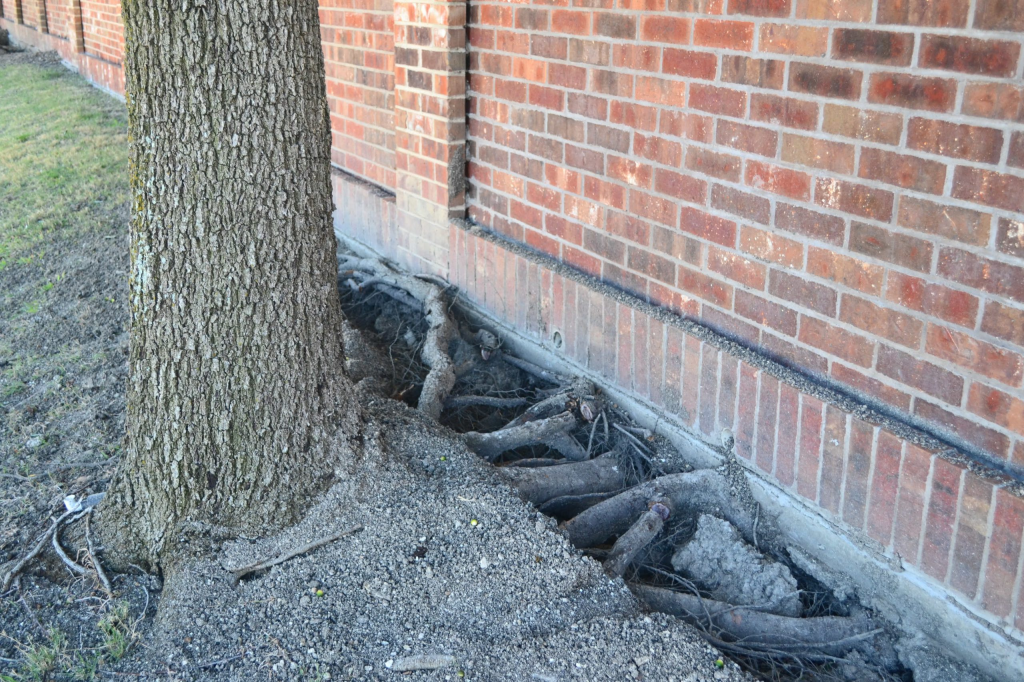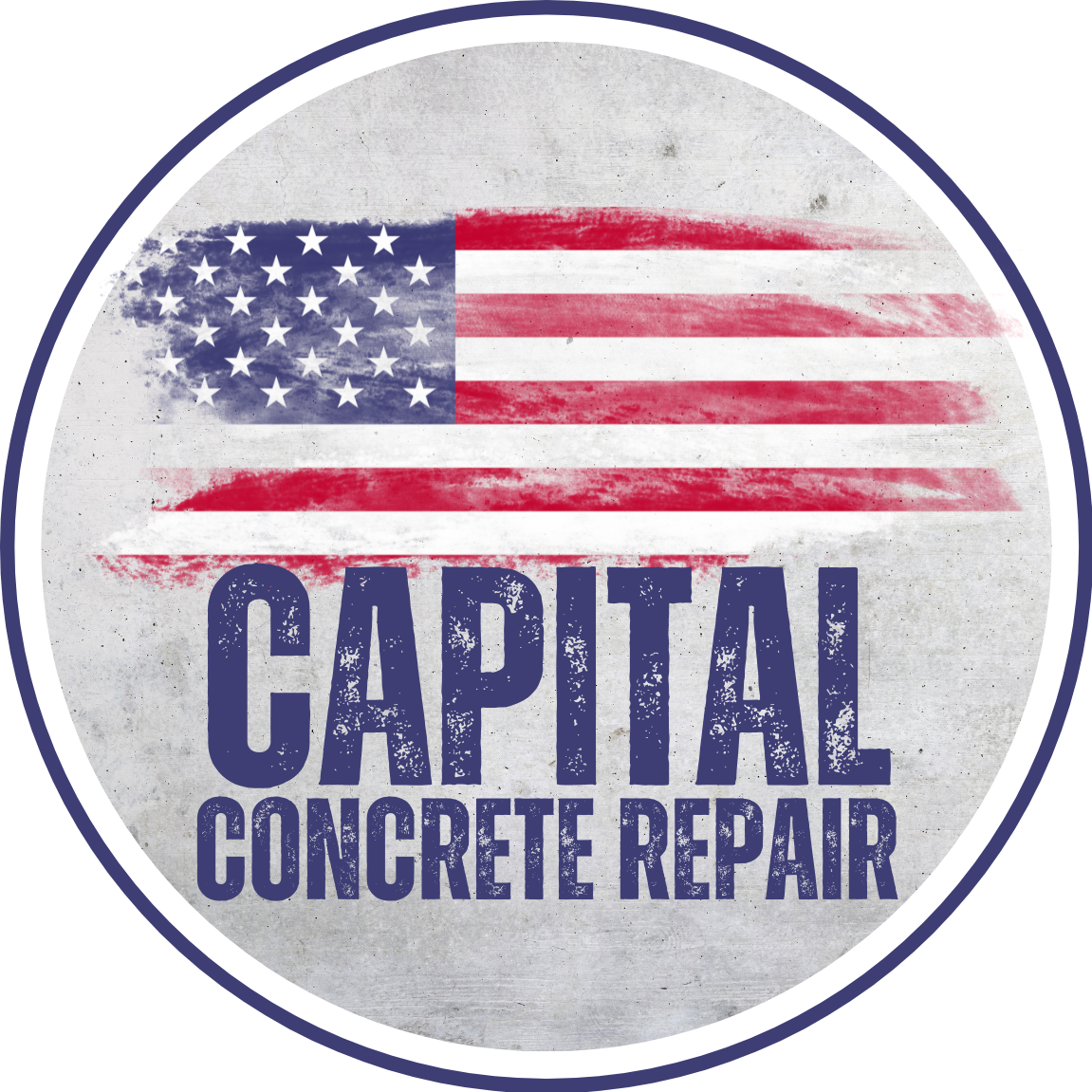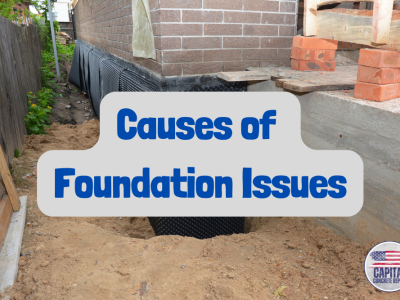Do you have foundation issues, and are you wondering what the cause of your foundation problem is?
Truth be told, a foundation issue is never a fun problem to sort out. You typically won’t notice your foundation issues until you see a visible crack or moisture in your home. In times like that, you will need an emergency foundation repair company to help you ASAP. However, if you are looking ahead to avoid foundation issues, here are some common causes of foundation problems we see!
Let’s take a look!
7 Common Causes of Foundation Problems & Cracks
Most homeowners don’t even think about their home’s foundation until they notice a large crack OR water in their basement. Sometimes, we visit homes around the DMV, and there are no issues at all. However, when we do find issues, here are typically the main culprits:
1. Soil Settlement

Soil settlement is a critical issue that often arises in foundation engineering. Essentially, the soil beneath a foundation compresses over time, leading to structural shifts that can compromise the integrity of your home.
Several factors contribute to this phenomenon, including:
- soil type
- moisture content
- load placed on the foundation.
For instance, clay-rich soils – like those in Northern Virginia – tend to expand when wet and contract when dry, resulting in unpredictable settlement patterns. Similarly, poorly compacted fill soils can lead to uneven support beneath a foundation, causing stress that can lead to cracks in walls or floors as your home ages.
In our experience, addressing soil settlement requires a comprehensive understanding of soil mechanics and careful evaluation, all of which should have been done before building. If settlement issues arise, solutions can range from underpinning or installing piers to redistribute the load to moisture control measures that stabilize the soil.
2. Moisture Changes
Dry seasons followed by wet seasons can cause soil to contract and then expand, potentially leading to foundation issues. Excessive moisture pressure (see more below) can add unnecessary stress to walls, resulting in cracks or sinking areas. Similar to how a load-bearing retaining wall is designed to hold a specific amount of pressure, the same goes for your foundation. Excessive moisture can be problematic, and the tell-tale sign is often water in your basement and cracks in the concrete.
3. Tree Roots

That is correct – tree roots can cause your foundation to crack. Those giant, slow-growing roots can result in foundation issues such as lifting, cracking, or even breaking. Similar to how you will sometimes see a sidewalk lifted by a tree root, the same can happen to your concrete foundation. While most home builders no longer plant giant trees near homes, more established neighborhoods with mature trees may see cracking along their foundations from tree roots.
4. Hydrostatic Pressure
Hydrostatic pressure is a common reason for foundation issues, and chances are you don’t even really know what that refers to. Hydrostatic pressure occurs when water accumulates in the soil surrounding your foundation, creating an upward force that can push against the foundation walls. This is particularly prevalent in areas with poor drainage or where the water table is consistently high (more so in coastal regions, which is why you don’t see basements in the southeastern part of the United States). If not addressed, the increased pressure can lead to cracks, bowing walls, and structural failure. The signs of hydrostatic pressure—such as basement moisture, uneven floors, or mold growth—can indicate a much larger problem beneath the surface.
5. Plumbing Leaks
You have probably noticed a theme here, but moisture is the main reason for foundation issues. From time to time, some homeowners experience plumbing leaks around their foundation or slab, which can cause foundational problems. Though rare, when you leak due to a plumbing issue, it is important to address it quickly to avoid foundation cracks and other issues.
7. Climate Conditions
The most detrimental factor for concrete is time and climate. Over time, concrete can lose its integrity, but this process takes hundreds of years. However, the climate can speed up this process, and freezing and thawing and adding moisture can cause foundational issues.
How to Fix Foundation Issues:
When it comes to addressing foundation issues, we can’t stress enough the importance of enlisting the expertise of a professional foundation repair company. Having dealt with my foundation problems, we have seen firsthand how crucial it is to get the correct assessment and repair strategy.
Here is how it works:
- Conduct a thorough inspection where a reputable foundation repair company evaluates the visible damage and the underlying causes.
- Identifying the root cause can help find the most effective solutions tailored to your situation. Foundation issues can stem from various sources, such as poor drainage, soil erosion, or even tree roots impacting the stability of the foundation (as mentioned above).
- Pick a repair option. Depending on the severity of the damage, repair options often involve techniques like slab jacking, piercing, or even wall anchors. However, we exhaust all efforts to ensure we don’t have to use such expensive solutions; instead, we utilize crack repair methods.
- Our go to method here at Capital Concrete Repair is to utilize an Epoxy Injection. Ideal for structural cracks to restore the foundation’s strength, an epoxy resin is injected into the crack, bonding the concrete together. Often combined with carbon fiber reinforcement for additional stability.
Each method has benefits and is suited for different foundation problems. For instance, slab jacking can help lift sunken concrete slabs back into place, while piercing involves installing steel or concrete piers deep into the soil to support the weight of the structure above. While repairs can vary significantly, the more intrusive methods are considerably more expensive.
If you have a foundation leak and crack, chances are you can repair the issue with an epoxy injection (or similar methods) done by a professional foundation repair company.
Moreover, many reputable companies offer warranties on their work, giving me peace of mind and assurance that my foundation is secure for years. If you face similar issues, I highly recommend contacting a specialized professional who can guide you through every step of the repair process.
Types of Foundation Cracks
What type of foundation cracks are there? There are actually a variety of cracks which is important to note since the way to repair may vary depending on the type of crack. Other factors that must be considered by the Capital Concrete Repair team is the depth and width of the crack.
Here are the most common foundation cracks we see:
- Hairline Cracks – Thin, superficial cracks typically caused by normal concrete curing. Generally, it is not a structural concern.
- Vertical Cracks – Run straight up and down or slightly diagonally. They are usually caused by soil settlement or shrinkage and are less concerning if they remain small.
- Horizontal Cracks – A more serious issue, often caused by excessive lateral pressure from soil or water buildup. This can indicate structural instability.
- Diagonal Cracks – Typically seen at a 30–75-degree angle and often caused by differential settling (one part of the foundation sinking faster than another).
- Stair-step cracks—These are Found in brick or block foundations, following the mortar lines in a step-like pattern. They are usually a sign of settling or shifting soil.
- Slab Cracks – Appear in concrete slab foundations, often due to soil movement, poor compaction, or excessive moisture changes.
- Corner Cracks – Located at the corners of a foundation, these can be caused by temperature fluctuations or drying shrinkage.
- Shrinkage Cracks – These are common in newly poured concrete and are caused by moisture loss as the concrete cures. They are typically thin and non-structural.
- Settlement Cracks – Result from a home’s natural settling. If they continue to grow or widen, they may indicate a bigger problem.
- Expansive Soil Cracks – Caused by soil that expands and contracts significantly due to moisture changes, leading to foundation movement and cracking.
FAQ About Foundation Issues
1. What are the most common causes of foundation issues?
Foundation issues are often caused by soil movement, poor drainage, and extreme weather conditions. Expansive clay soils can shrink and expand with moisture changes, leading to foundation shifting. Poor drainage around the foundation can cause water accumulation, weakening the soil and causing settling. Droughts, floods, and temperature fluctuations can also impact soil stability.
2. How does tree root growth affect my foundation?
Tree roots can contribute to foundation problems by extracting moisture from the soil. This can lead to soil shrinkage, causing foundation settlement and cracks. Additionally, large tree roots can physically push against the foundation, creating structural stress. To prevent this, it’s recommended to plant trees at a safe distance from your home and use root barriers if necessary.
3. Can plumbing leaks lead to foundation damage?
Yes, plumbing leaks—especially under-slab leaks—can cause foundation damage. Water from leaking pipes can erode or oversaturate the soil beneath the foundation, leading to soil movement and uneven settling. Regular plumbing inspections can help detect leaks early and prevent costly foundation repairs.


 Fairfax, VA Concrete Crack Repair
Fairfax, VA Concrete Crack Repair
Leave a Reply